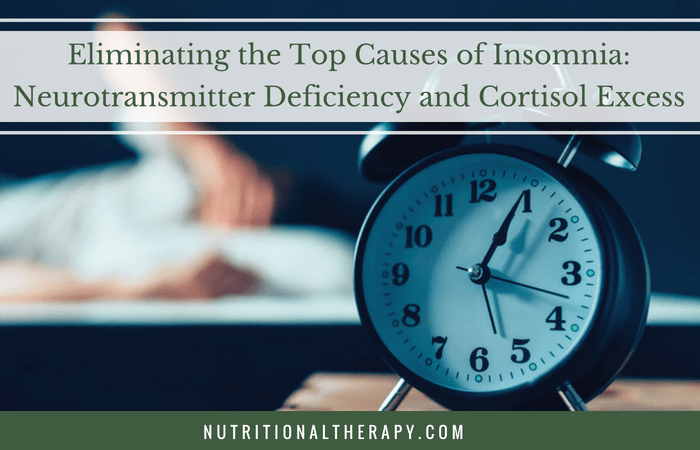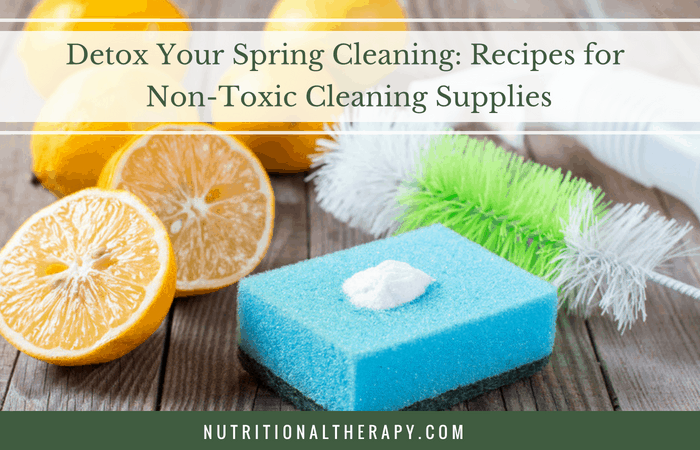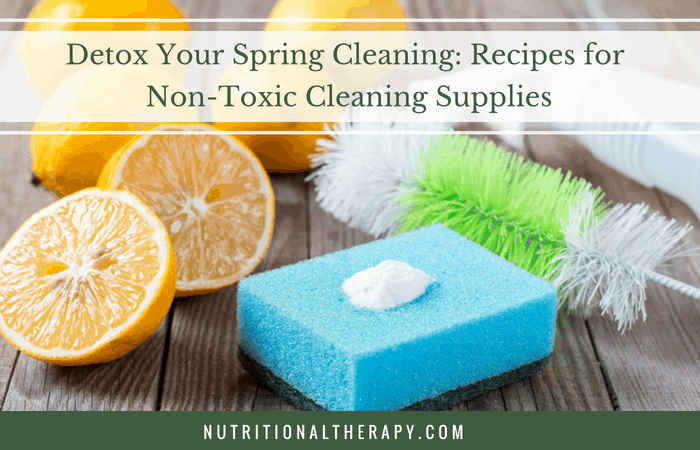Guest post by NTA Lead Instructor, Meredith Kinsel-Ziter, NTP, BCH
We hear more and more about the health effects of heavy metal toxicities in wellness circles – and increasingly – even on our evening news! We are surrounded by heavy metals in our homes, our workplaces, our oceans, and even our gardens. But, what are these “heavy metals” anyway?
“Heavy metals” are naturally occurring elements found somewhere in our universe, possibly on our planet, and maybe even in our bodies! They can all be seen on the periodic table of the elements (remember that from chemistry class?) hanging around with other elements – some important in human biology and some, not so much. They are arranged on this chart in order of various electrical and magnetic properties. Some elements are very similar and are grouped together, while others look nothing alike.
To understand the impact of heavy metal toxicities on our health and how to approach their elimination foundationally, let’s explore the following questions:
- Why do metals even accumulate in the first place?
- How do our bodies naturally eliminate heavy metals?
WHY DO THEY ACCUMULATE IN THE FIRST PLACE?
Our bodies need a number of elements found on that crazy periodic table to make things work properly and, ultimately, to keep us alive! These nutrients are used as building blocks (like calcium in bones), cofactors (like zinc for stomach acid production or chromium for blood sugar regulation), and many other important processes. In fact, these functions and nutrient minerals are so important that the body creates special “seats” (called receptors) with electromagnetic “nametags” for specific minerals in a location where they are needed – like a seat of honor at a fancy dinner party. It’s pretty amazing stuff.
So, what happens if the guest of honor doesn’t show up to the dinner party – if those seats can’t be filled with the right mineral because the diet is deficient in that mineral or the digestive tract isn’t absorbing it properly? Well, the body does what any impatient shopper would do. It grabs the thing that looks the most similar. When it decides to plop this look-alike element down in the empty seat, it binds strongly and won’t move (due to the strong electromagnetic pull).
I often describe it as a game of musical chairs gone awry. These heavy metals sit down in the empty spots, cross their arms, and refuse to get back up! While they do technically fill the seat, they were never the right match for the job so they won’t allow the “game” (or the biological process of the body) to move forward. The more of these receptor “seats” are filled with obstinate heavy metals, the more our metabolic processes will slow. In an unfortunate plot twist, however, our body perceives that it is actually sufficient in the needed nutrient mineral because the “seats” are filled. So much so, in fact, that it may actually eliminate the “good guy ” mineral if it comes in – creating an even greater deficiency!
HOW DO OUR BODIES NATURALLY ELIMINATE HEAVY METALS?
Our bodies have amazingly complex systems in place to metabolize and eliminate heavy metals, once they enter our bodies. This mostly involves three different mechanisms:
- Glutathione – A sulfur-containing protein produced within almost all cells of our body, with metal-binding and antioxidant properties. Its production requires numerous B vitamins in addition to protein and sulfur. Proper function in the body also requires adequate selenium.
- Metallothioneins – A family of sulfur-containing, metal-binding proteins produced within most cells of the body. In humans, the production of these proteins can be “turned on” by the presence of heavy metals in our bodies. They also have natural seasonal production variations and are heavily reliant on nutritional status, also requiring adequate dietary protein and sulfur.
- Porphyrins – A family of non-sulfur containing molecules with metal-binding capabilities. Some readers may be familiar with these via conditions known medically as either porphyria or pyroluria. Heme (found in red blood cells) is the most well-known human porphyrin. Some types of porphyrins are produced within almost all cells of the body, while other types are produced only in the liver and bone marrow. Plants also produce porphyrins, found in their chlorophyll! The production of these substances can also be “turned on” by the presence of heavy metals in our bodies.
PUTTING IT ALL TOGETHER
Because our bodies have been exposed to heavy metals since the beginning of our time on earth, they have developed numerous mechanisms to keep these minerals/metals in check. The regulatory systems described above work together to bind and remove heavy metals, to allow space for the real, needed ones. Some of them work to pull heavy metals from inside of cells, while some transport those heavy metals through the blood and some shuttle them through the liver, gallbladder, kidneys, and out into the intestines or urine for excretion.
SUPPORTING THE BODY’S NATURAL ELIMINATION PROCESSES
Once in the intestines, the health of the gut lining is extremely important so that the metals don’t leak back through, into the bloodstream. The binding (or “chelating”) power of plants, nuts, and seeds shines at this stage of the game. Once the heavy metals are the intestines, they will bind strongly to plant material in order to be eliminated safely.
Many of the symptoms seen or felt in heavy metal toxicities are actually due to the mineral deficiencies caused by our body’s own elimination mechanisms. Those metal-binding materials we reviewed above are so wonderful at binding elements, they may get a little confused and also steal important nutrient minerals from us – like zinc, copper, magnesium, chromium, molybdenum, or selenium! Chemistry doesn’t discriminate. A properly prepared, nutrient-dense diet (and possibly even working on therapeutic nutrient dosing with a properly trained practitioner) will be your best defense strategy here – as your functional need for nutrient minerals is likely to be higher than average.
TO PROVIDE FOUNDATIONAL SUPPORT FOR THE BODY’S NATURAL HEAVY METAL ELIMINATION PATHWAYS:
- Support digestion and gut healing.
- Provide the body with ample amounts of the important nutrient minerals outlined above.
- Support bile production and liver function with nutrients like B vitamins, vitamin C, choline, taurine, and glycine – or herbs like dandelion, milk thistle, and artichoke.
- Provide plenty of plant foods with binding abilities such as raw greens (especially parsley and cilantro), seaweed, chlorella, spirulina, nuts, and seeds. Plant binders will most likely only bind to the minerals that make it into the digestive tract, so should be used along with other strategies.
- Provide ample dietary sulfur – and maybe even add in a supplemental source. Some of the best supplemental sources are n-acetyl cysteine, MSM, and alpha lipoic acid.
Safe nutritional support of heavy metal burdens always respects the body’s natural functions. Provide it with what it needs – then get out of its way!
Join us for a Live Webinar with one of our Instructors and Admissions Advisors!
During this call, you’ll explore and learn:
- How to create a rewarding career in holistic nutrition that will give you the confidence and competence to replace your full-time income (whether you’re new to nutrition or or using it to enhance your current services)
- How our unmatched education and instructor support sets our NTP program apart from other nutrition programs
- How graduates are successfully using their education and the many career opportunities available to you
- If the NTP program is the right fit for you and how to move forward in financing your education





 Abigail Hopkins is the co-founder of
Abigail Hopkins is the co-founder of 

